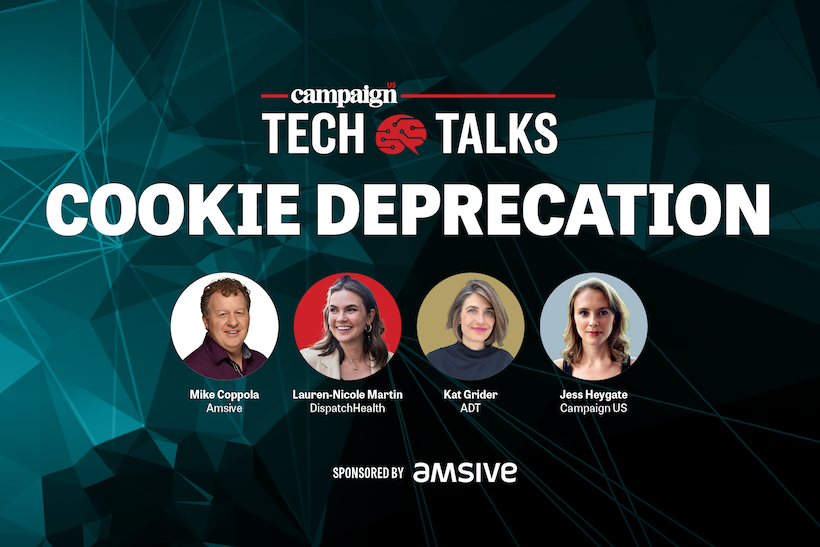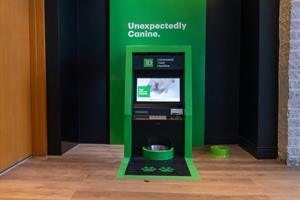Google’s much anticipated deprecation of third-party cookies in Chrome has now been pushed to the end of 2025. With Chrome having a 65% share of the global browser marketplace, this is a substantial change that the advertising industry must adapt to. Yet, marketers are still scrambling to prepare.
According to a recent report from WARC, only half (51%) of marketers are prepared for the removal of third-party cookies. Facing a major loss of precision and signals they’ve come to rely on, online advertising monetization and measurement is poised for massive disruption.
During a recent Campaign US webinar, technology editor Jessica Heygate moderated a discussion between Mike Coppola, president, Amsive; Kat Grider, VP, ecommerce and digital experience, ADT; and Lauren-Nicole Martin, digital marketing manager, DispatchHealth, about the implications of this fundamental shifton audience strategies and technology stacks.
Informing audience strategies
The deprecation of third-party cookies is shifting the way brands think about audience strategies. ADT, for example, is prioritizing customer engagement beyond standard questions on traditional webforms to capturing data points that allow for more personalized marketing. “The goal is to use first-party ways to improve and diversify interactions with customers,” Grider explained, noting that abandoned or saved carts and quizzes can offer new customer insights. In addition, “the contextual opportunity allows us to keep broadening the aperture of the type of customers that we might want to reach out to in different ways.”
DispatchHealth is investing in patient models — “using first-party data that can be augmented with second-party partner data or third-party aggregators” — as well as customer data platforms (CDPs), Martin said. For a healthcare provider, customer engagement and first-party data consent may include account creation for a faster checkout as well as online and email marketing to increase consumer confidence in interactions and data privacy.
“Predictive models across client portfolios are forcing us to be purposeful about who we are targeting,” Coppola said. “Tapping into third-party and intent data to overlay against those modeled audiences has been successful; it forces you to think about your adjacency to your message and how to customize that in a way that's value-add.”
The truth is most brands do not use much of the data they have collected. Start by evaluating the company’s data practices, collect only what is needed and use that to inform the audience strategy, Martin advised.
To Grider, the first step is to create an enterprise-level ID to manage customer data and stitch the data together to better serve customers. “We want to get into a give-get exchange and make sure that's underpinned by a data strategy that is only as good as its ability to then activate across our channels,” she explained. “We have to know how all those things are going to hang together so that the very next question we ask the customer has a lot of intent behind it.”
Building a tech stack
A company’s tech stack also influences the audience strategy and determines not only how the systems communicate but also what outcomes to expect.
For ADT, tool assessment and investment in CDP is key. “A lot of the nitty-gritty of the architecture comes down to the application programming interfaces (APIs) and how that data is flowing in line with consent, and making sure that personally identifiable information (PII) is only in the right places,” Grider said.
Legacy software systems, such as enterprise resource planning (ERP), may not be capable of an API call and need to be upgraded. “The reality for most clients is that data lives in many different places and is not necessarily enriched,” Coppola said. “It's not easy to pull it all together to be able to start activating in a meaningful way.”
Standing up its CDP gives DispatchHealth “that opportunity to look at where the data is and what those sticking points are so that we fully understand where we are and what our ultimate outcome is, and we can make sure that we're building that architecture,” Martin said.
Internal alignment and education are critical to successfully implementing technology changes. “There's a sea of different technologies and players out there and many different CDP partners, and it can become hard to navigate those waters when there's a learning curve internally,” Coppola said.
That internal education campaign allows a company to forge partnerships and communicate the risk if they aren’t improving their tech stack or continuing to test and learn once they have built it, Martin added.
A proof of concept featuring customer learnings and lower media costs can help build alignment. After all, “as a customer out in the world shopping, you know what a good experience is and that's the experience you want to deliver,” Grider noted.
Providing a good experience will pay off in the end. “Customers always vote with their actions,” Coppola said. “They like the personalized experience and the right message in the right format with the right relationship with a brand.”
Implementing strategies
Partners have a significant role to play in creating effective solutions and protecting user privacy and brand revenue. When choosing partners, assess their certifications and the technologies they are using. “If they're going through the rigor to make sure they have high trust certifications, it shows they feel confident in the processes they have and that they're going through the steps to validate that,” Martin said.
A benefit of CDPs is that the brand decides what information to share with third-party partners. “It's going to be a central part of the marketers’ tool set in the future to control who gets exposed to what and that's only the necessary information, which allows you to re-enable those publishers and partners that don't have the same security standards but are not putting you at risk,” Coppola explained.
All these changes inevitably result in the need for a workforce that can utilize the tech stack and leverage the data to engage better with customers. “The tools are only as good as the people who use them,” Grider said.
The role of ad ops is increasingly significant given privacy concerns and the complexity and fragmentation of the landscape. Source attribution of first-party data — through exposure logs for performance digital, programmatic and Meta, for example — helps measure the value of each touchpoint.
In the end, Coppola said, “understanding the incrementality of the mix, the contribution to customer acquisition with all the media exposure and insight into how much someone should be exposed or at what point someone is oversaturated has a lot more value than trying to create a fractional share of attribution across different channels.”










